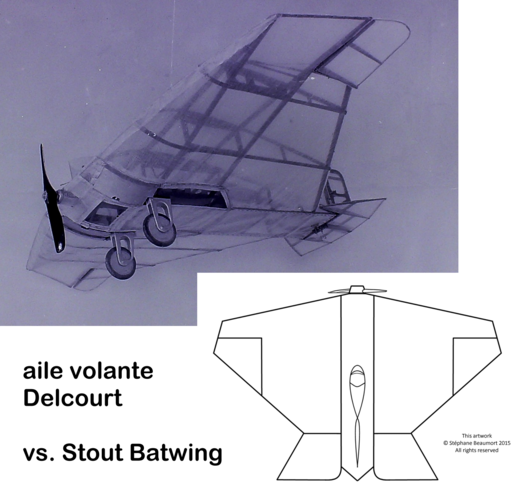Pierre Delcourt (July 8, 1898 – April 9, 1988)
Born in 1898, his passion very quickly turned to what was happening a few kilometers from his home, in Mourmelon (Henri Farman made the first city-to-city flight from Mourmelon to Reims in 1908), then for the big weeks of aviation of Reims in 1909, 1910 and 1913, whose impact was worldwide, soon had no more secrets for him.
The aviation factories, which are being built in the Paris region, have great needs during this period of war and are looking for young staff open to progress. Pierre managed to get hired in the studies department at Aéroplanes Hanriot & Cie (Levallois).
There, he participated in the different stages of construction of a device while perfecting his skills to contribute to the improvements and the development of new features required by the war effort, until, in 1918, being responsible for receiving the planes manufactured for Italy.
At the end of the war, in 1918, he was mobilized in the aviation, assigned to the flight crew of bombers (that is to say planes with bombs inside), he took the bombs and dropped them from the plane! ).
Then, as a soldier, he followed advanced training courses for aeronautical mechanics in Lyon, only to find himself in military aviation during the Moroccan pacification campaign.
It was at this time that Marshal Lyautey developed medical aviation and brought in the deputy doctor Eugène Chassaing (considered the father of medical aviation).
It was with these two characters that Pierre became interested. He remained in contact with them for a very long time (he is a founding member of the league for the propaganda of medical aviation).
Returning to civilian life, he joined SPAD (Société Anonyme Pour l'Aviation et Ses Dérivés, belonging to the winner of the English Channel, Louis Blériot) in Suresnes. This company had the advantage of providing training for its executives itself.
He obeys his father and returns to run a building materials business in Vertus, a small village in the Marne.
He keeps his enthusiasm to think and... invent.
From the beginning of the 1920s his ideas materialized. He first created a large “flying wing” model with a wingspan of more than 5 meters. It was an airplane whose cabin and fuselage were embedded in a large, thick wing. He made it fly by attaching rockets to it which made it the first jet plane! The “thick wing” did not appear in the United States until the late 1950s.
Medical aviation remained one of his favorite fields: he developed a pod attached under the fuselage of an aircraft and intended to receive a stretcher for the evacuation of an injured person (later produced on helicopters). ).
At that time, the planes used for medical aviation by Chassaing were Bréguet biplanes. Pierre imagined a plane with two fuselages allowing him to transport an ambulance. At the time, the introduction of a car into an airplane was unthinkable and this invention was the subject of articles in the specialized press of the United States, Belgium and France.
For years he continued to submit his ideas to Doctor Chassaing and Marshal Lyautey, and to publish articles notably in the journal “Union Méd Canada” in 1927.
Drawing on his experience in aviation, he decided in 1927 to apply the principles of aerodynamics to automobiles.
Its first studies were tested at the Saint-Cyr wind tunnel test center, which was one of the references in aerotechnology at that time (tests carried out using models).
The car looks like a bubble, the roof is blown like the upper surface of an airplane wing, the sidepod is streamlined like the lower surface of the same wing, ending with a rear extractor. The windshield is negatively inclined, beveled in 3 parts and profiled like that of an air fighter.
To find out more about headwind:
https://citroen-c4-c6.forumgratuit.org/t124-pierre-delcourt-inventeur-oubli
His ideas touched many fields, from firefighters to construction.
He received the medal from the National Office of Scientific and Industrial Research (or research and innovation medal) awarded by the conference of presidents of technical committees of the Ministry of Public Instruction (in 1928 or 1929).
I will post photos a little later.



